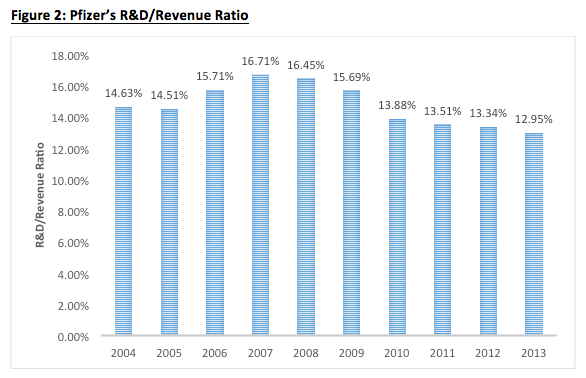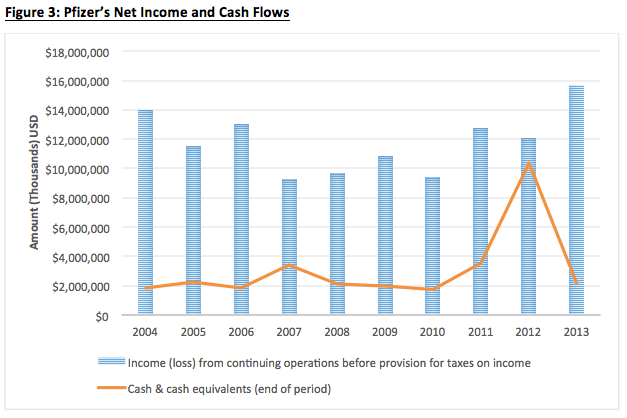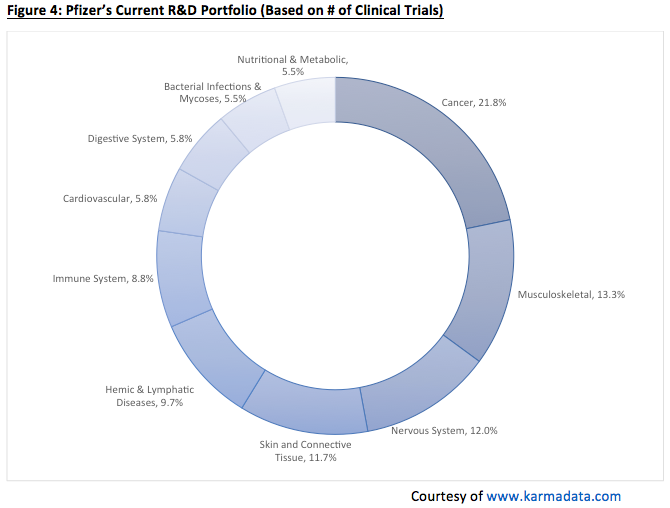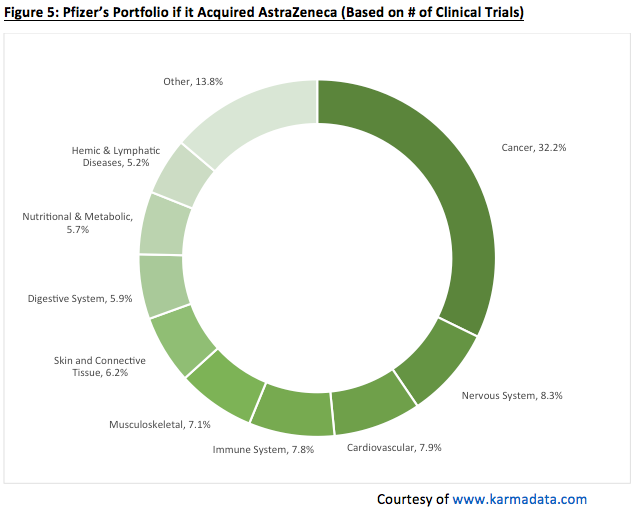Why Pfizer is Hungry for Acquisition
Is Pfizer prime for acquiring another biopharmaceutical company?
Around January of 2014, Pfizer approached AstraZeneca with a $98.6 billion acquisition offer [1], however, neither company struck a deal and both enterprises walked away. Will Pfizer likely approach another biopharmaceutical enterprise for acquisition? This article will discuss some background on Pfizer’s financial history, evaluate Pfizer’s R&D portfolio, and determine whether Pfizer is prime for acquiring another biopharmaceutical company.
The Impact of Lipitor’s Patent Expiration
According to Pfizer’s financial reports, Lipitor was one of Pfizer’s biggest revenue generating drugs, reaching more than $9.6 billion in sales in 2011 [2]. Nonetheless, Pfizer’s Lipitor sales were significantly impacted after its patent expired in November 2011 [3]. Figure 1 illustrates the subsequent impact of this patent expiration on Lipitor sales.

Figure 1 demonstrates that Lipitor represented 14% of Pfizer’s overall revenue in 2011, only to slump to 4.5% of overall revenues in 2013. Correspondingly this attributed towards Pfizer’s revenue declines, which dropped from $67 billion in 2011, to $51.6 billion in 2013.
Pfizer Becomes More Profitable and Flush with Cash
Like many biopharmaceutical companies, Pfizer was at a point where it needed to change its business model; shifting away from blockbuster drug discovery, and focusing more on mergers and acquisitions [4]. In 2011, Pfizer aimed to cut 1,100 jobs, and closed one of its UK R&D facilities [4]. Figure 2 illustrates that Pfizer’s 2013 R&D/Revenue ratio declined to the lowest level in nearly a decade.

Despite declines in revenues, Pfizer has never been more profitable over this time span, as earnings before income and taxes increased to $15.7 billion in 2013, or by 23% since 2011, and cash has grown as illustrated in Figure 3.

The shift from internal discovery in combination with this type of profitability infrastructure and available cash, Pfizer has positioned itself to acquire other biopharmaceutical enterprises in order to fuel its R&D portfolio. Moreover, this positioning enables Pfizer to issue higher dividends on its security; on October 23, 2014, Pfizer announced the issuance of a $0.26 quarterly dividend per share, or an $11 billion share repurchase program [5].
What Would Have Pfizer’s R&D Portfolio Looked Like if the AstraZeneca Deal Went Through?
Many investors have speculated that Pfizer went after AstraZeneca’s oncology portfolio, however, Pfizer’s pursuit appears to be more than just oncology. We analyzed Pfizer’s current R&D portfolio (Figure 4) and compared it to what it would have looked like after merging it with AstraZeneca’s R&D portfolio (Figure 5).


While it is apparent that Pfizer targeted AstraZeneca’s oncology portfolio, merging Pfizer’s R&D portfolio with AstraZeneca’s would have supplemented existing therapeutic area targets, such as cardiovascular, nervous system, immune system, digestive system, and nutritional/metabolic. Moreover, the merger would have significantly increased Pfizer’s R&D portfolio diversification.
Pfizer is Poised to Acquire
Pfizer has currently positioned its business model more towards acquiring other biopharmaceutical enterprises in order to supplement its existing R&D portfolio, rather than investing in innovative therapies within. While the AstraZeneca acquisition would have significantly improved Pfizer’s R&D strategy, Pfizer will probably go after smaller companies that contribute towards accomplishing a portfolio similar to the one in Figure 5. Naturally, Pfizer will probably pursue companies that focus on oncology, CNS, cardiovascular and immune system therapeutic areas.
References:
[1] http://money.cnn.com/2014/04/28/news/pfizer-astrazeneca/
[2] http://www.pfizer.com/files/investors/presentations/FinancialReport2013.pdf
[4] http://www.nature.com/news/2011/110209/full/470154a.html